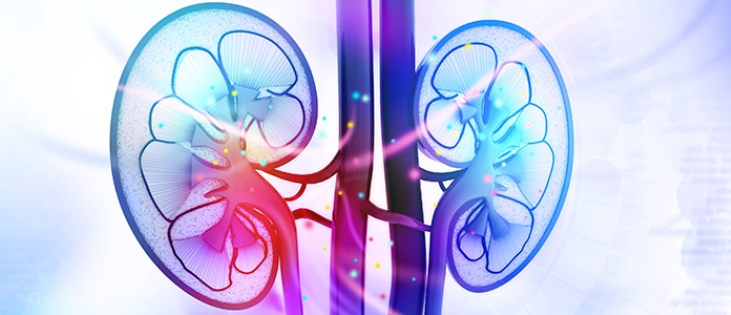Chronic or end-stage kidney failure is a serious health problem in the United States. Some 25 million adults, including many Veterans, have the disease. That means for the rest of their lives they may be on dialysis, the purification of blood as a substitute for a kidney’s normal function, or they may receive a kidney transplant—in hopes of avoiding long-term health complications or even death.
Kidney transplantation has a much higher survival rate than dialysis over a five-year period. Despite such success, there aren’t enough transplantable kidneys for every person with permanent loss of kidney function who gets cleared for a transplant. An estimated 100,000 patients with the condition, also known as end-stage renal failure, are awaiting a kidney transplant in the U.S. Only about 18,000 such procedures take place each year.
Dr. Jason Wertheim, a surgeon and biomedical engineer at the Jesse Brown VA Medical Center in Chicago, sees many patients with permanent loss of kidney function. He’s researching ways to compensate for the loss of that organ. Among other projects, he’s leading a bioengineering effort to develop tissue for a replacement kidney and thus circumvent the problem of organ shortage.

Dr. Jason Wertheim, a surgeon and biomedical engineer at the Jesse Brown VA Medical Center in Chicago, is working on developing an artificial kidney. (Photo by Jerry Daliege)
The project is part of (Re)Building a Kidney, a consortium led by the National Institute of Diabetes and Digestive and Kidney Diseases at the National Institutes of Health. The five-year program, which includes about 25 biologists and engineers from around the country, is trying to develop tools that will facilitate development of an artificial kidney in the future. Wertheim is the consortium’s only researcher with VA affiliation.
His project uses an extracellular matrix, a collection of fibrous material that holds cells together within tissues and organs. The matrix contains signals that drive cell differentiation, the process by which a cell becomes specialized in order to perform a specific function. The system serves as a model for nephron development within a full-scale kidney scaffold and sets the stage for further cell differentiation in a perfusion bioreactor, which cultures cells much longer than traditional laboratory-based cell culture. The ability to develop extracellular scaffolds and to add back donor cells to the matrix allows researchers to analyze growth and maturation of the cells in three dimensions.
Here’s the challenge: At least 20 different cell types make up a kidney. They would all need to be part of an engineered kidney that replicates the organ’s natural functions. Knowing exactly where the cells must be within the engineered organ is tricky. Solving that equation is critical to someday taking a discarded human kidney and growing a replacement kidney with new cells.
“At this stage in the technology,” Wertheim says, “we’re first looking at how cells respond to the extracellular matrix, what the cells become, and how changes to the matrix can influence how they function.”
Wertheim and his team have been experimenting with mainly rodents. They remove the kidney from the animals and extract its native cells, leaving only the three-dimensional structural matrix, before repopulating the matrix with new cells. “Then through the vasculature [blood vessels in the organ], we can permeate the scaffold to spread the nutrients that support cell growth,” Wertheim says. “The cells will grow within the three-dimensional scaffold.”
While it’s too early to predict how long it will take to create an implantable and functional human kidney, Wertheim hopes that someday there will be enough tissue-engineered replacement organs for patients. “Among our patients that have end-stage disease, there’s a desperate need for new organs to first sustain their lives and then to enhance their quality of life,” he says. “Kidney transplantation is life-saving over the long term, compared with dialysis.
“But as physicians we cannot necessarily perform a transplant immediately when a patient needs it,” he adds. “We’re dependent upon the supply of altruistic, cadaveric donors, and sometimes patients have to wait a couple of days, weeks, months, and even years. Some patients don’t have that amount of time.”
About the author: Mike Richman is a writer-editor in VA’s Office of Research and Development in Baltimore.
Topics in this story
More Stories
Diverse representation of women in health care research allows MVP to make discoveries for women’s health
Join the Million Veteran Program online. You will have the option to receive an at-home blood sample collection kit in the mail.
VHA's new podcast series, New Horizons in Health, features a candid discussion of psychedelic assisted therapies for Veterans experiencing mental health conditions.






